After years of trial and error, and failing to succeed at getting top keyword rankings and building backlinks from sites with a high domain authority, finally it all came together for us — and voila! We achieved victory.
Within two years we gained hundreds of top keyword rankings for over 30 locations across the nation. The following strategy has been tested and proven to work on not one, not two, but on over 30 location pages.
We are about to divulge the secret sauce that worked for us.
To do this local SEO strategy for your business, you will need to take advantage of a local SEO tool. I recommend using Semrush.com to find the right keywords, test pages for errors, and to monitor your results. While not free, it comes in at a fraction of the cost of local SEO pricing.
The “focus subject” in this blog post will be a “debt relief company,” that is in a so-called “boring industry.” The company used the following local SEO strategy to gain hundreds of top keyword rankings on Google. The primary keywords that this company aimed to rank for were; “debt relief,” “debt settlement” and “debt consolidation” — which are all very competitive keywords. As a matter of fact, a study that was recently published on Moz.com rated the keyword “debt consolidation” amongst the top 50 most competitive keywords on the internet. See #48 on this list:
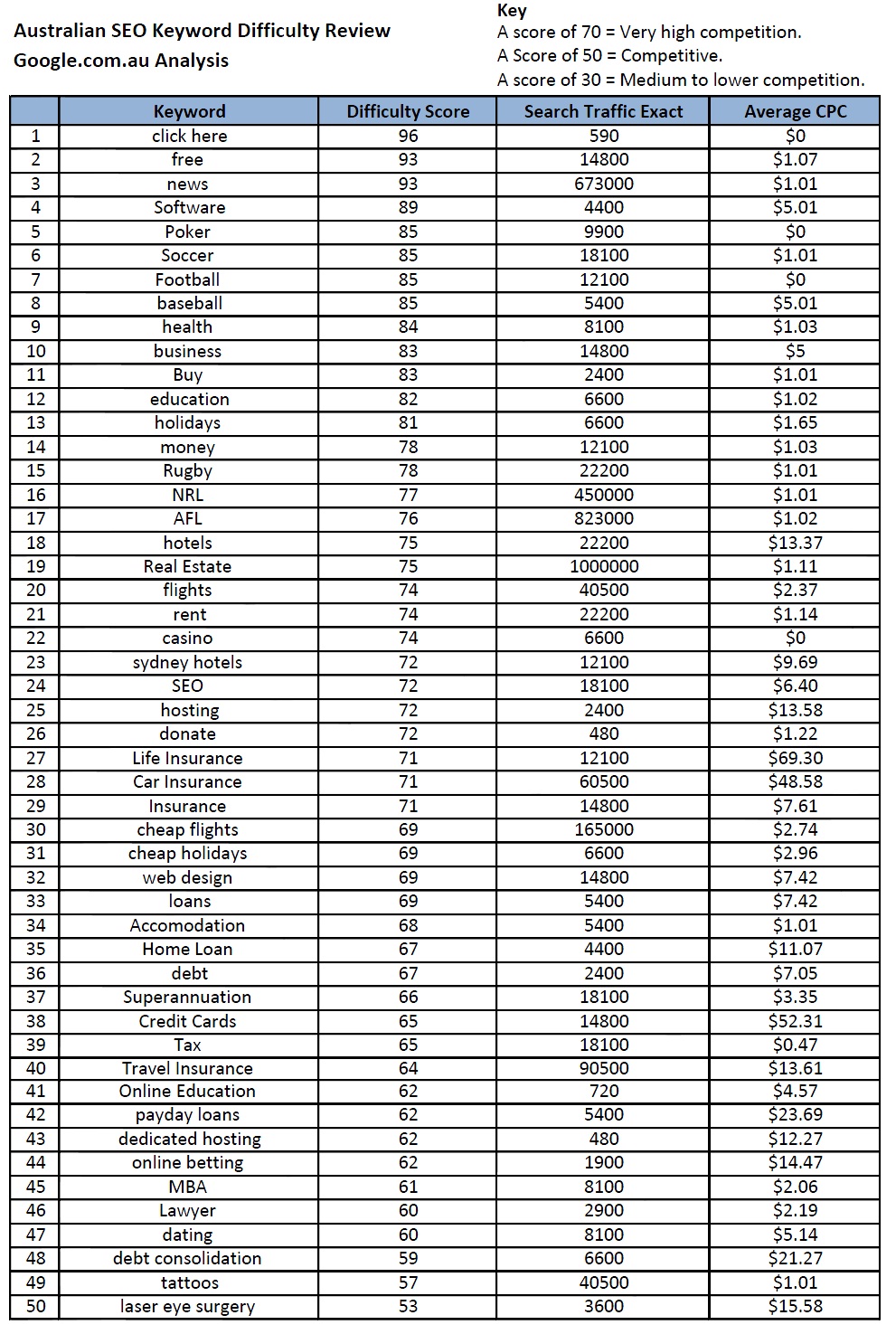
Top 50 Most Competitive Keywords in SEO
Over the last two years, this small company was able to successfully build more than 50 backlinks from local college websites, rank “top 5” on Google for hundreds of competitive and highly targeted keywords, and is now generating between 70-100 targeted leads per day (what they only dreamed of doing about 3-years ago).
The Following SEO Strategy Will:
Increase your website's social media shares and overall traffic. Make it easy to build high-quality backlinks. Allow your business to organically rank for the most competitive keywords. Make your website a lead generating machine. Drastically lower the bounce rate on your website's homepage. Show you how to improve your conversion ratio and click-through rates. Think outside the box and find new valuable keywords.Included in this post:
A local SEO template to use for each location page (that has been proven to work). A free tool to create and implement schema.org (for non-coders). Step-by-step instructions on how to create SEO optimized location-based pages.Step One: Select a Targeted Keyword, Add a Geo-Modifier to It & Drop It In Semrush.com
To select the right keywords for your business, Semrush.com explains it best in this post here.
After selecting the keywords that you want to rank for, now add a location next to that keyword and drop it in Semrush's keyword overview tool. Semrush will then provide you a nice list of related keywords that you will use on your local page.
I dropped the following keyword query into Semrush's keyword overview tool: “Texas Debt Relief”, and here's what Semrush came up with:
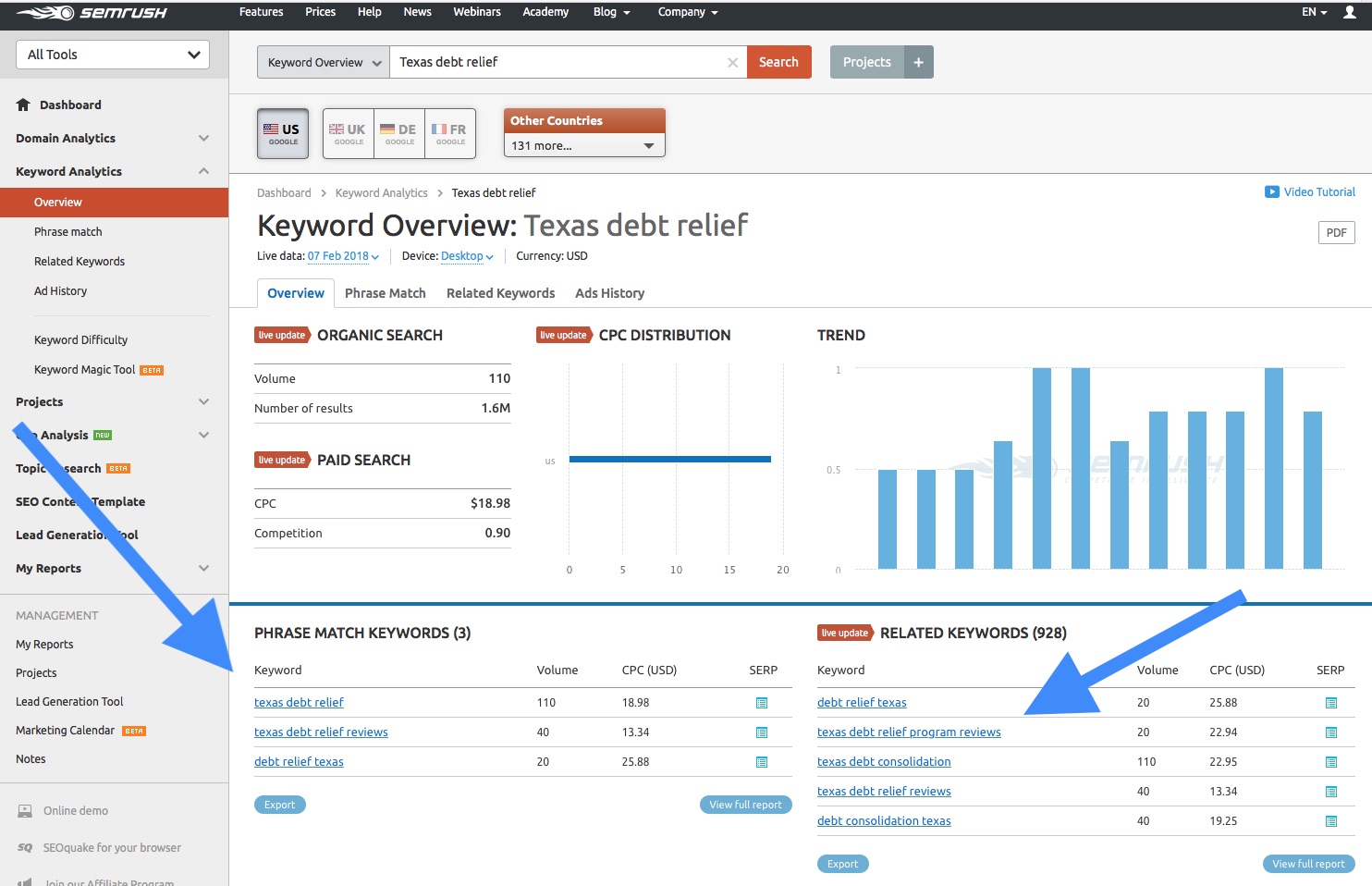
Semrush's keyword overview tool
This will be your list of keywords for the template in step number two.
Why are we putting a location in front of the primary keyword that our business wants to rank for?
Google's Venice update, “localized organic results on broad search queries.” Simply put, if you have a location in front of a keyword, Google will prioritize showing your result over a similar web page that doesn't have the location in front of that particular keyword.
If you check the search volume of a keyword after putting a location next to that keyword, the search volume will appear to be much less than the regular version of that same keyword, but don't let that estimate fool you. What keyword tools don't show you is “buyer intent.” A person is more likely to sign up for your service when using a geo-modifier/location within their search query.
We ran over 30 tests on AdWords, comparing the user intent of a keyword with and without a geo-modifier. All the results were similar to this one example below, illustrating a higher click-through-rate and conversion ratio for the keywords that had a location next to them.

You can improve conversion ratio and click-through rate by using a geo-modifier next to a keyword.
Step Two: Use This Free Local SEO Template to Create Local Pages for Your Business
Replace “debt relief,” “debt settlement” and “debt consolidation,” with keywords that are relevant to your business.
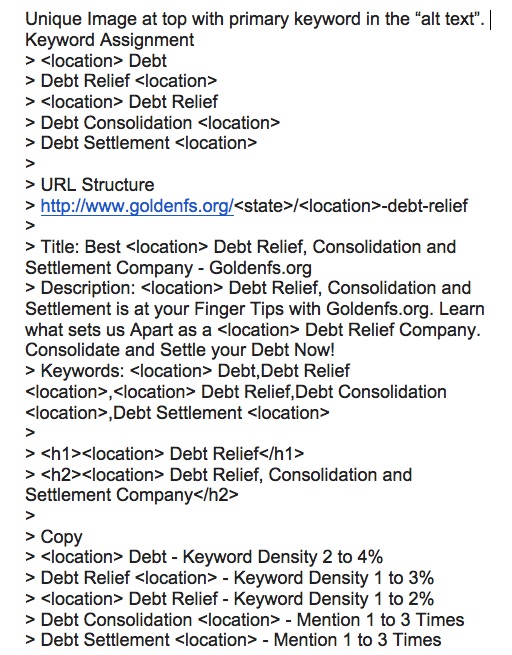 Here is a local SEO template that's proven to work.
Here is a local SEO template that's proven to work.
If you offer iPhone repair services, your h1 may be “California iPhone Repair Services” and your h2 could be “BBB A+ Rated California iPhone Repair Company.”
Important tip: Offer something valuable on each of your location-based pages, giving the user an added incentive to stay on the page and interact with it, keeping the bounce rate low. (i.e., a calculator, infographic, or some type of downloadable PDF checklist)
To properly implement on-page SEO for a location-based page make sure to:
Insert your keywords in the right place without being spammy. Craft a click-worthy meta title and description. Formulate your h1 and h2 to be compelling and include your keywords. Answer important questions related to the product or service you are selling. Include schema.org to help explain what each page is about to Google. Make your pages unique and interesting, and free of grammar mistakes by proofreading it multiple times over the course of several days.Our company is currently ranking #2 on Google for “Texas Debt Relief:”
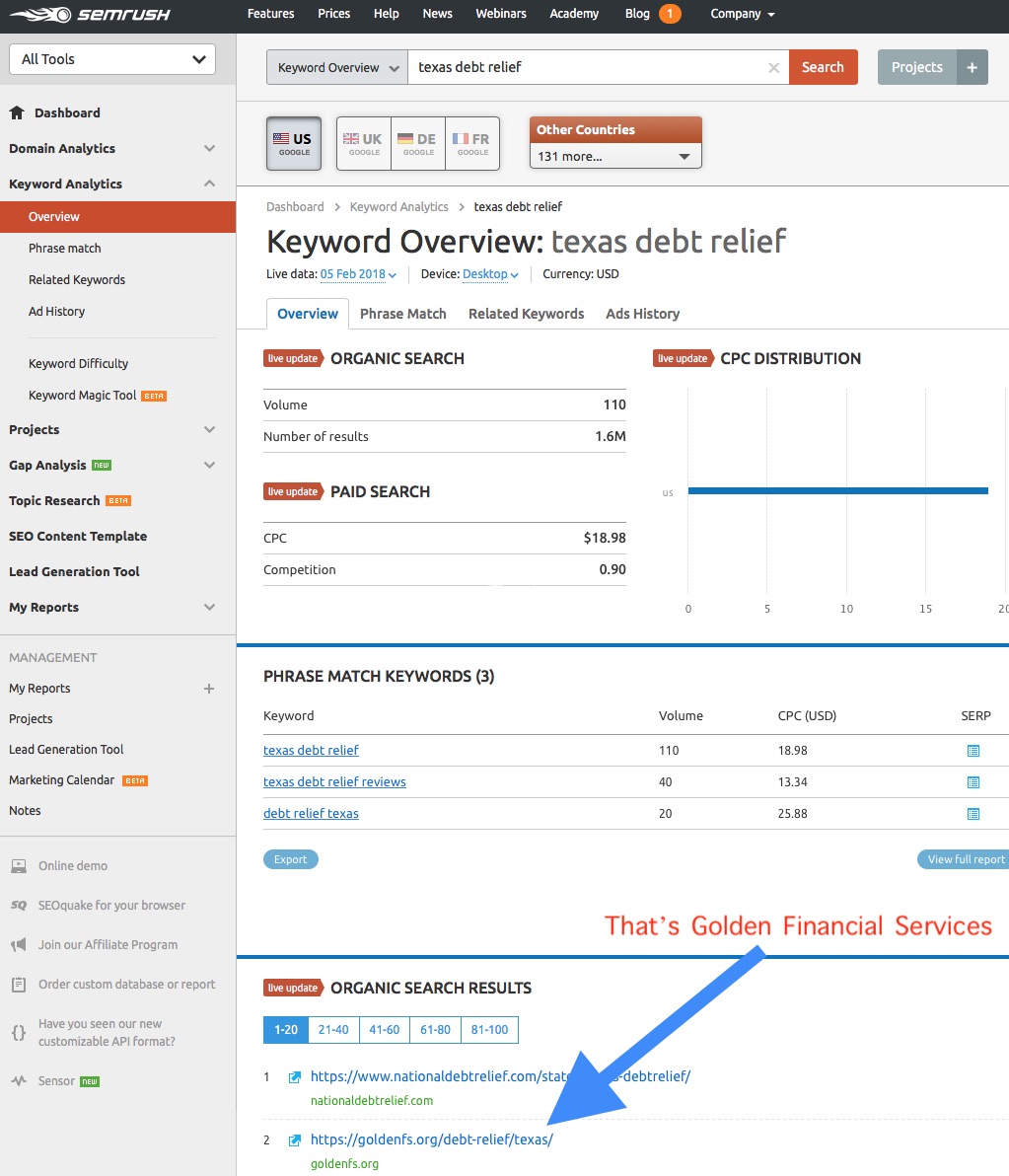 Here is an example of a local business web page that uses the above-mentioned template and this page is ranking #2 on Google for the desired keywords.
Here is an example of a local business web page that uses the above-mentioned template and this page is ranking #2 on Google for the desired keywords.
Step Three: Lower Your Homepage's Bounce Rate & Start Driving Traffic to Each Location Page
Stop trying to convert visitors that arrive on your homepage.
Your website's homepage should be used to direct users to the specific pages on your website that have the answers and solutions to their problems.
Why do customers come to your business for help? Make it easy for them to find the exact product that they need.
Does your business have multiple locations?
Your website's homepage should allow users to effortlessly find the webpage that is intended for their location — indirectly producing powerful local business ranking signals that Google can easily translate.
The secret to lowering the bounce rate on your homepage is to improve its navigation system. Our company was suffering from a high bounce (Over 75% bounce rate), but a few small changes lowered the bounce rate by more than 50%.
The goal was to replicate our homepage, to be the way Google operates. What better way to please Google right?
Here is the trick ... simplify your homepage's navigation system to make it easy for visitors to find what they need — dummy-proof it. On our website, we made the main attraction this orange bar that says “Select Your State To See Options.”
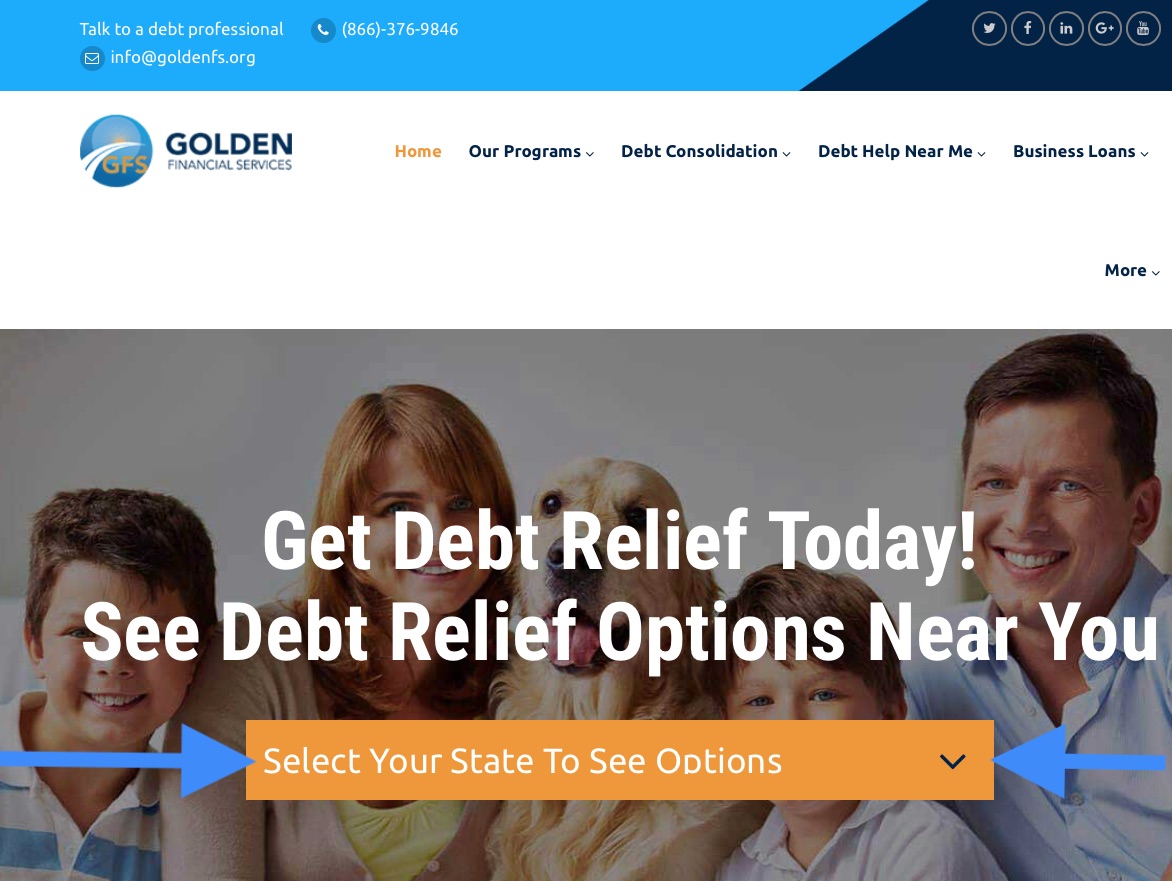 By simplifying your homepage you can reduce the bounce rate
By simplifying your homepage you can reduce the bounce rate
By implementing this “search engine like feature,” our homepage's bounce rate was lowered from 70+ percent, to under 20%, as illustrated in this screenshot from Google Analytics.
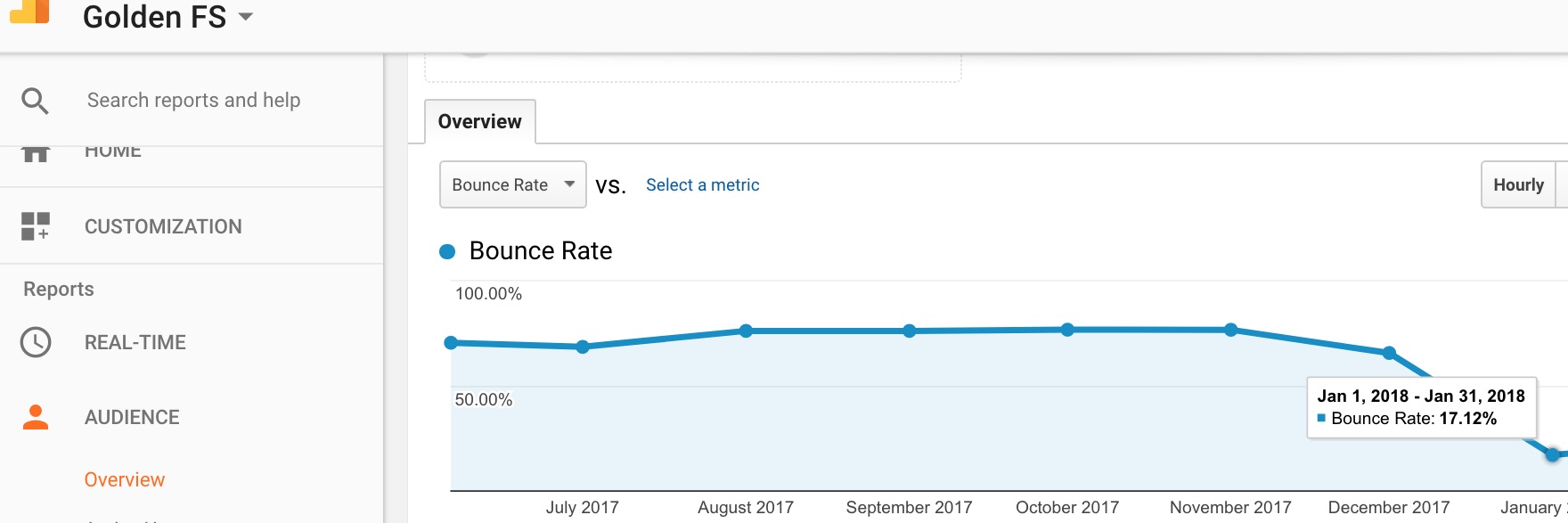 Google Analytics Illustrates the Bounce Rate Improved by Over 50% by Simplifying the Homepage
Google Analytics Illustrates the Bounce Rate Improved by Over 50% by Simplifying the Homepage Now, instead of seeing over 70+% bounce rate, 80+% of the users stay on the site. Not only do new visitors stay — they also navigate to their state's local page and either find what they need or convert into a highly qualified lead.
Step Four: Incorporate Schema.org Into Your Location Based Pages
For all of us with minimal coding experience, you will love this next treat. We all know the importance of using Schema.org, but implementing it on web pages is easier said than done.
Especially, with all the Schema.org WordPress plugins that cause more markup errors inside your Google Webmaster Tools account than the positive attributes that they bring to your website — the entire subject of Schema.org can be a big headache for some of us.
This free Schema.org tool streamlines the entire process of creating and implementing Schema.org into your local web pages.
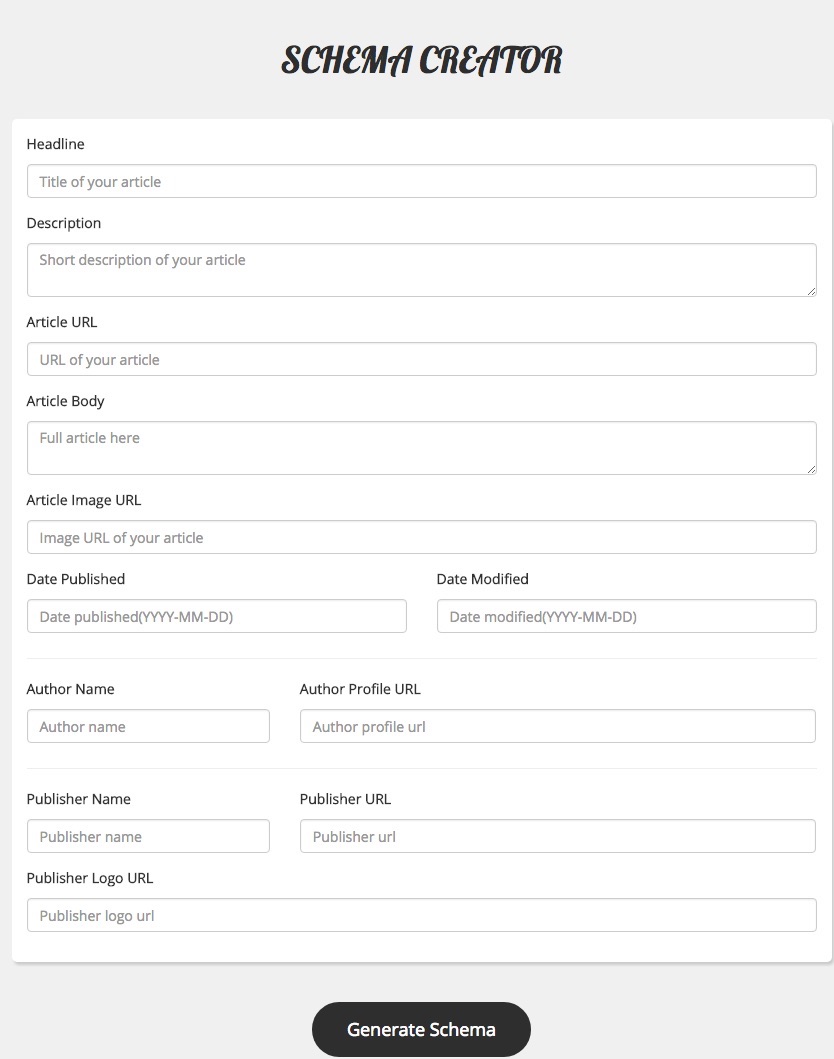
A Schema.org tool that streamlines the entire process of creating and implementing Schema.org
You don't need to sign up, fill anything out or pay for this tool, just use it for free. It works like a charm.
Within 30-days after implementing Schema.org into our Pennsylvania debt relief page, by using this tool, it started showing up in the “position zero.” Woohoo!
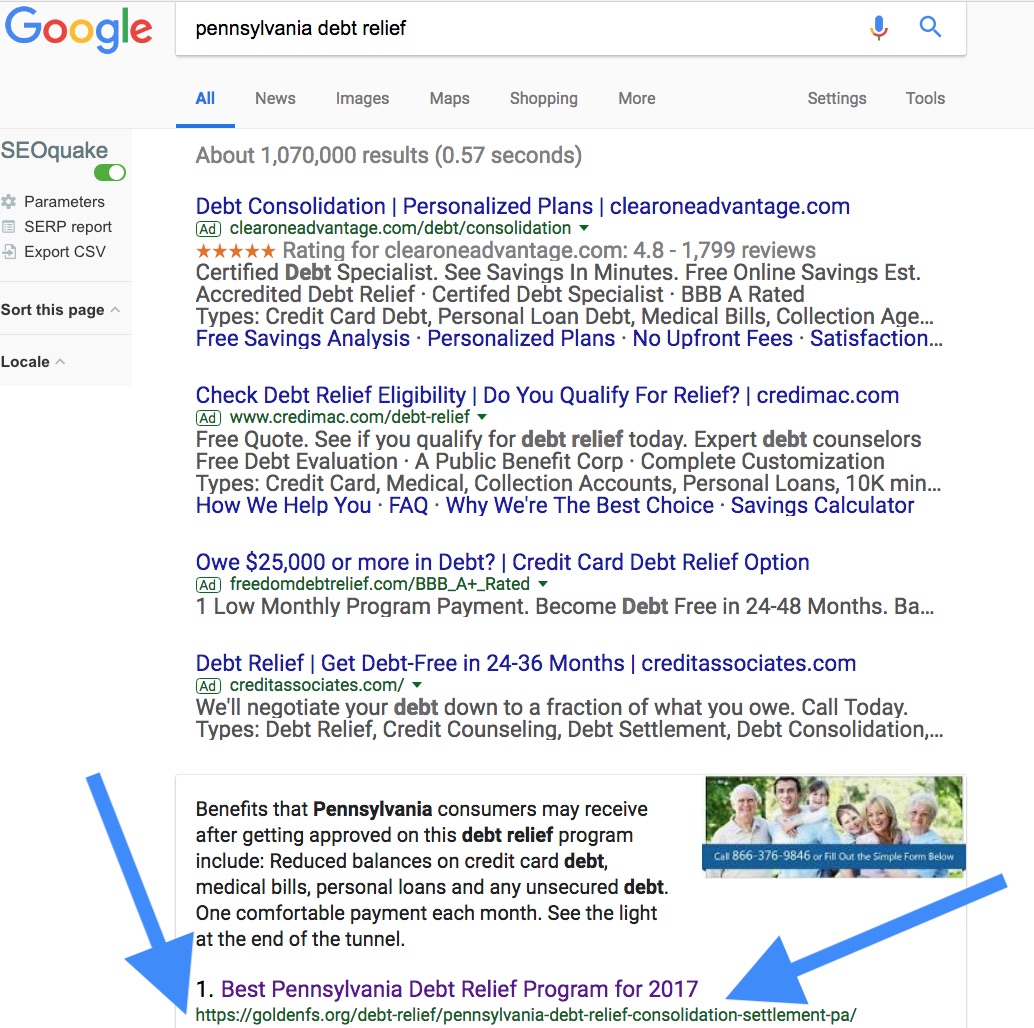 Featured Snippet "Position Zero" by Using the Schema.org Tool.
Featured Snippet "Position Zero" by Using the Schema.org Tool.
Translate the information from your webpage, into this tool. Then click on where it says, “Generate Schema,” and you will next be prompted to copy the code. After copying the code, you can paste it into the WordPress Editor section of your webpage (at the very bottom).
As shown here ...
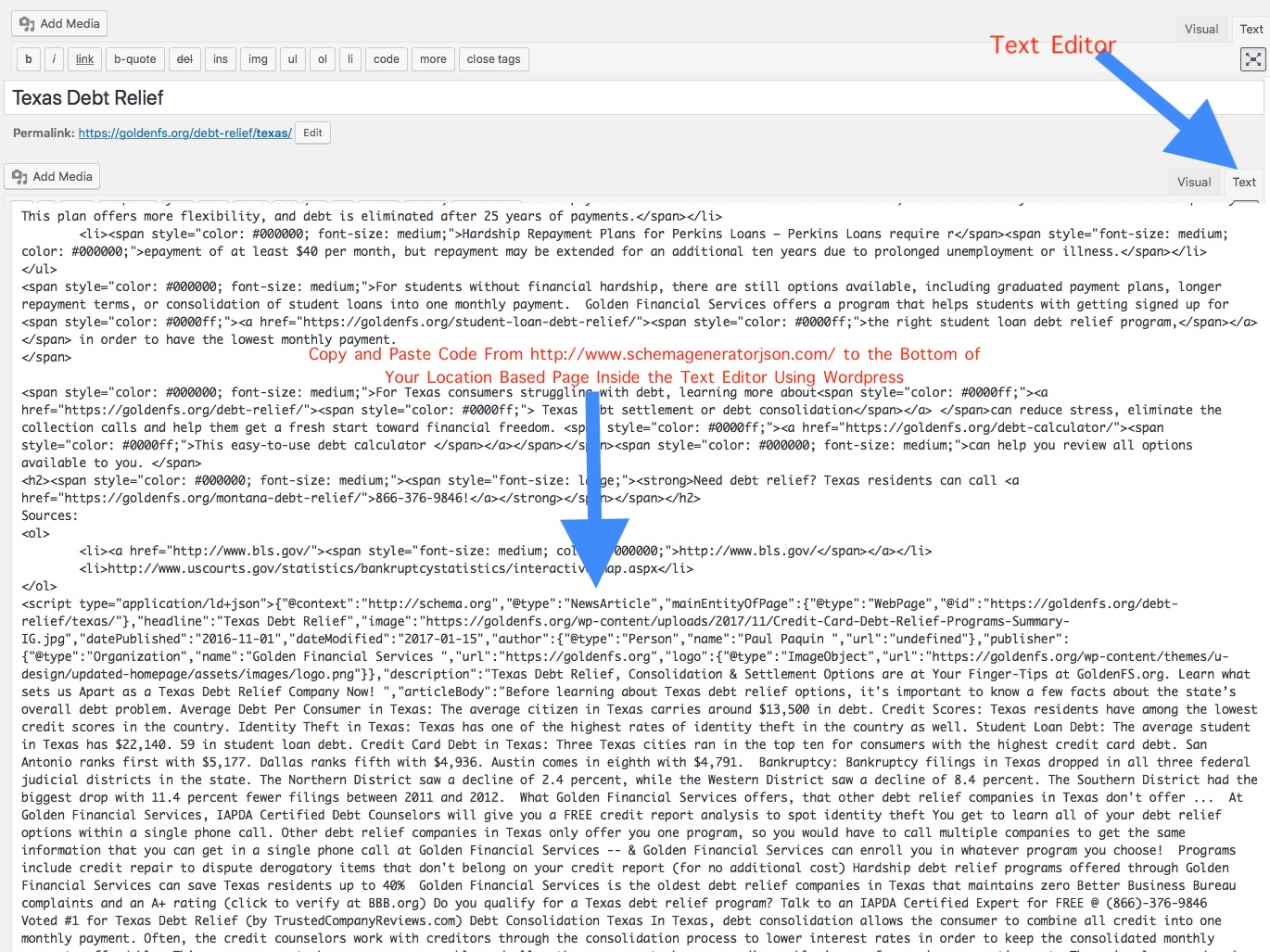 How to implement schema.org into a webpage in WordPress.
How to implement schema.org into a webpage in WordPress.
You can then test your webpage for errors with Google's Schema.org testing tool here.
Step Five: Get Local Colleges to Link to Your Site
Building the links ... this is the fun part.
Offer an annual scholarship through your business.
Benefits of the scholarship include:
Your business gets to donate money to students, helping them to pursue their college dreams. Local colleges will share your scholarship on their website, linking back to your website — giving you backlinks from college websites that have a high domain authority. Students will submit phenomenal free content on your website. Students and voters will be sharing and liking your website all over social media, bringing your website an entirely new stream of traffic. Scholarships attract local news and media — potentially giving your website massive exposure. The money that your business pays to the winner of the scholarship is 100% tax deductible.At the end of the day, these are motivated and driven students, that are working hard to raise enough money to go to college. It is a prodigious cause.
After you publish a scholarship page on your website, start reaching out to colleges and asking if they would list your scholarship on their website. Most colleges have a section on their website that is specifically designated for third-party scholarship opportunities.
You can contact a college's financial aid department where they can assist with getting a scholarship published on their website. Just make sure to follow their guidelines or else your scholarship may get rejected.
Here are a few examples of colleges that have linked to our scholarship.
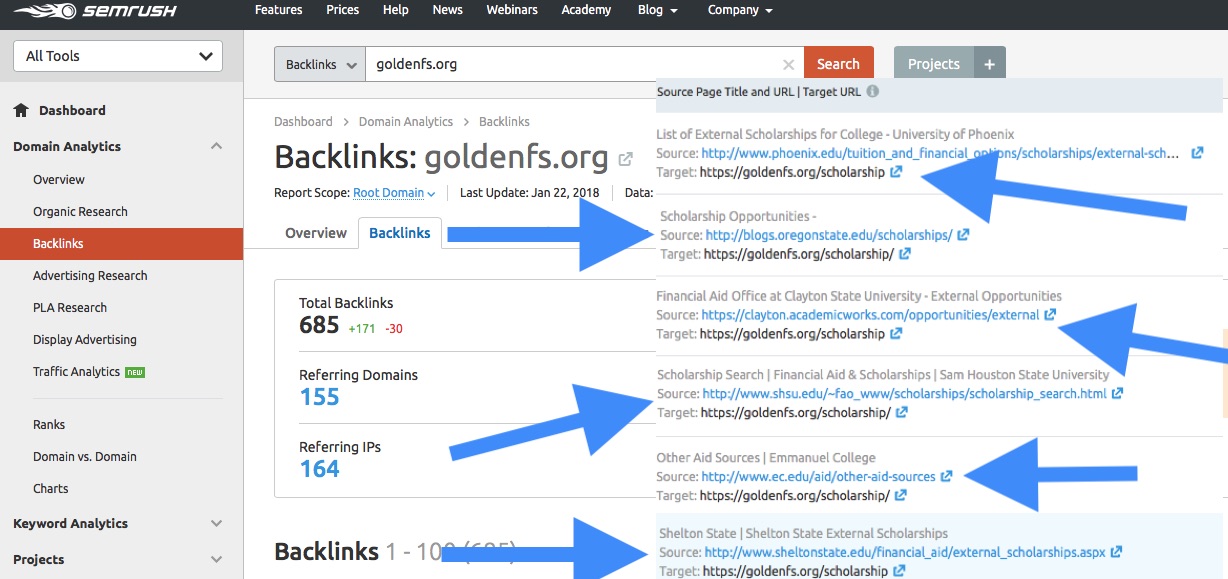
Here are some examples of backlinks created from the college scholarship.
To apply for a scholarship, students need to submit an essay, video or infographic, answering a question related to your service or products.
Now comes the fun part — awesome content and it is free!
Since our company offers debt relief, our scholarship asked the following question:
“In the United States, there is $15+ billion in delinquent credit card debt (people who are more than 90-days behind on credit card payments) — besides restricting the act of lending what are viable options for solving this problem?”
Students could then submit an essay, YouTube video or infographic, answering this question with their proposed solution. Our company would then publish each student's essay, video or infographic on our blog and send each student a link to their blog post. Each student would then start sharing their page all over the internet to get votes.
Scholarships drive social media shares from the students when signing up for the scholarship and from the voters when they vote. You can even make it a requirement that applicants share your scholarship on Facebook, as part of the sign-up process, but be careful because this tactic can be borderline spammy.
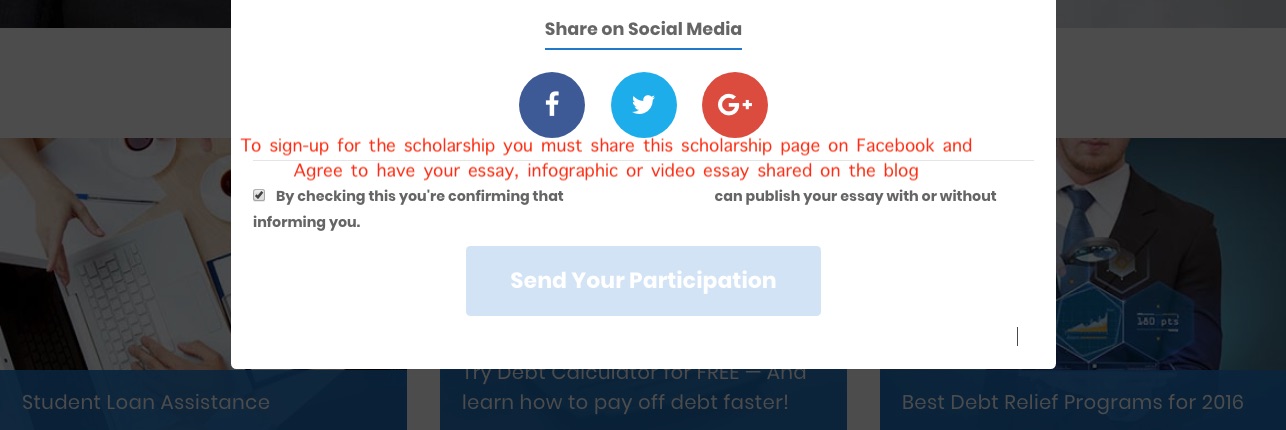
To sign up for the scholarship students are required to share the page
Scholarships can give your website high-quality content and a massive number of social media backlinks.
What problem does your business solve or deal with? You could create a scholarship, by having students answer a question related to your business and get students to pitch ideas about how they would solve the problem. Then publish the answers on your website and allow students to pass their page around to get social media shares and votes.
You may even find some brilliant answers that you can use to improve your product line, or even find your next star employee — the potential benefits and possibilities that can come from a scholarship program are endless.
Step Six: Get Massive Social Media Exposure & Shares
After you publish each applicant's essay, video or infographic on your blog, the applicant will then start sharing that page all across social media, in an effort to get votes — indirectly getting your company massive exposure, traffic, social media shares, and links. The applicants are extremely motivated to win because it is a “cash prize” at stake.
Every time someone votes, your website gets liked and shared on Facebook with new audiences. Here is how:
To prevent applicants from cheating, to vote, a voter must first validate their identity on Facebook. After logging in and validating their identity on Facebook, they can then click on the “thumbs up” and vote — simultaneously sharing the applicant's page on social media and liking your website on Facebook.
Here is a screenshot of the second blog created on our website where we published all of the students' essays. Inside each blog post, you can even link to your location pages, so on top of building links to your domain you are also driving traffic to each local product page.
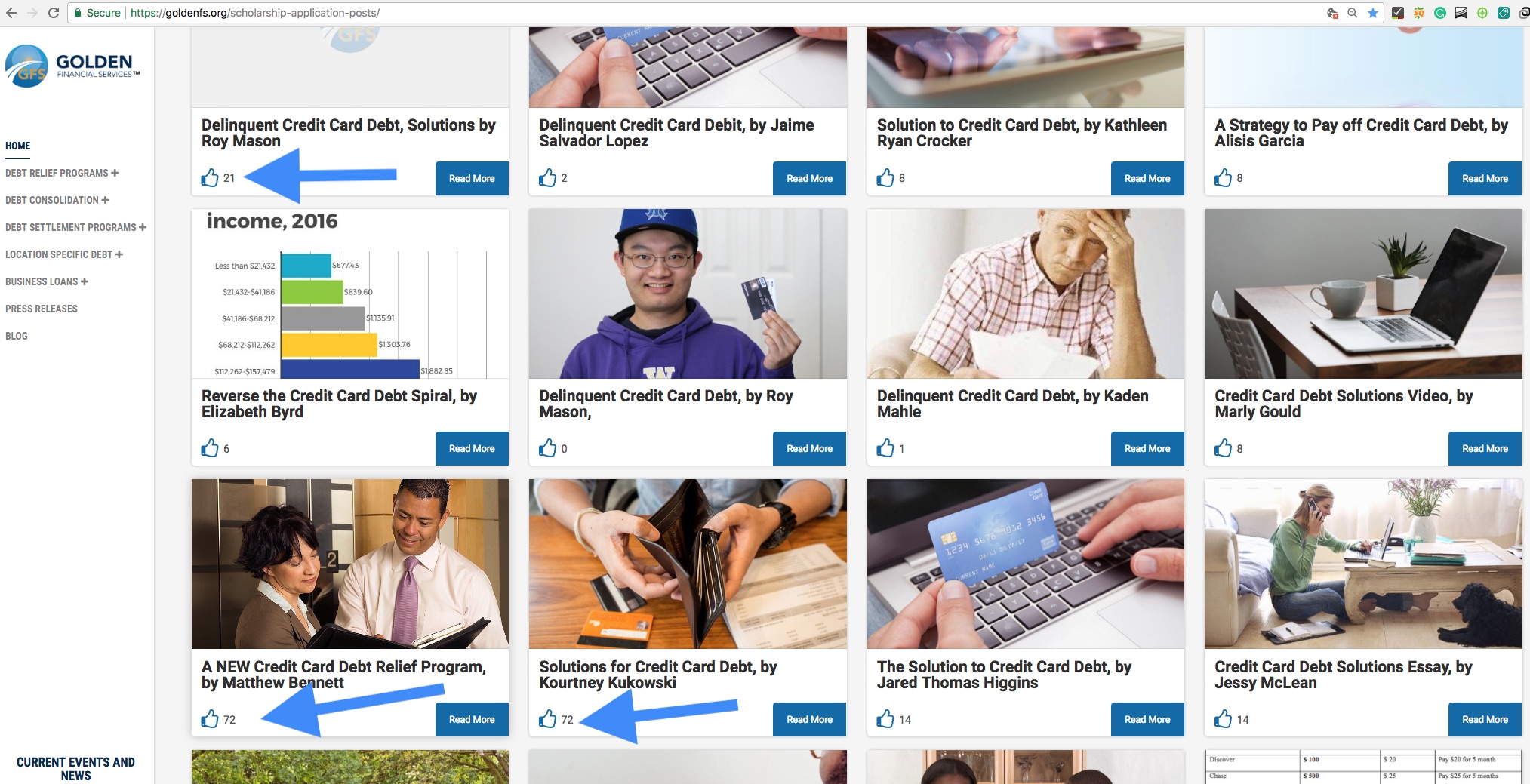 Scholarship created 100's of social media shares and Facebook likes.
Scholarship created 100's of social media shares and Facebook likes. Step Seven: Track Your Results With Semrush & Watch Your Rankings Rise
Semrush makes it easy to track your results with their project tools and report builder. You can set up automatic reports to get emailed to you on a weekly basis illustrating your organic traffic improvements, top keywords, backlinks, and social media activity.

Use “My Reports” in Semrush.com to track your results.
If a series of spammy links come through, we get an email from Semrush and can then determine whether or not to disavow certain links or at times we would reach out to the site’s webmaster and request they remove the link.
In the past, we've used Moz.com and a few other tools that have worked well, but no other SEO tool offers everything you need, all-in-one place, like what Semrush.com offers.
Innovative SEO services
SEO is a patience game; no secret there. We`ll work with you to develop a Search strategy focused on producing increased traffic rankings in as early as 3-months.
A proven Allinclusive. SEO services for measuring, executing, and optimizing for Search Engine success. We say what we do and do what we say.
Our company as Semrush Agency Partner has designed a search engine optimization service that is both ethical and result-driven. We use the latest tools, strategies, and trends to help you move up in the search engines for the right keywords to get noticed by the right audience.
Today, you can schedule a Discovery call with us about your company needs.
Source:





